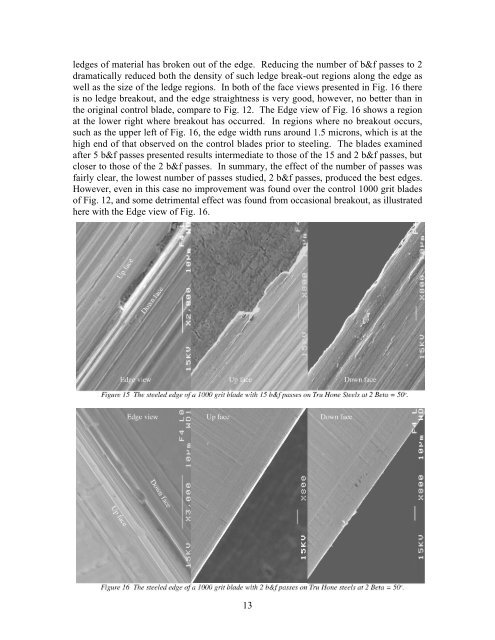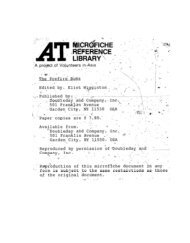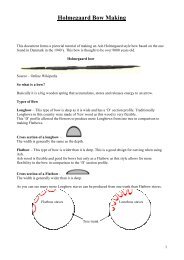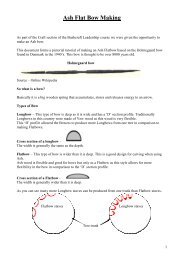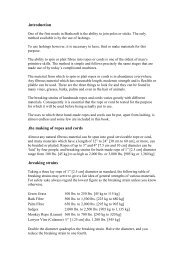Experiments on Knife Sharpening John D. Verhoeven ... - BushcraftUK
Experiments on Knife Sharpening John D. Verhoeven ... - BushcraftUK
Experiments on Knife Sharpening John D. Verhoeven ... - BushcraftUK
Create successful ePaper yourself
Turn your PDF publications into a flip-book with our unique Google optimized e-Paper software.
ledges of material has broken out of the edge. Reducing the number of b&f passes to 2dramatically reduced both the density of such ledge break-out regi<strong>on</strong>s al<strong>on</strong>g the edge aswell as the size of the ledge regi<strong>on</strong>s. In both of the face views presented in Fig. 16 thereis no ledge breakout, and the edge straightness is very good, however, no better than inthe original c<strong>on</strong>trol blade, compare to Fig. 12. The Edge view of Fig. 16 shows a regi<strong>on</strong>at the lower right where breakout has occurred. In regi<strong>on</strong>s where no breakout occurs,such as the upper left of Fig. 16, the edge width runs around 1.5 micr<strong>on</strong>s, which is at thehigh end of that observed <strong>on</strong> the c<strong>on</strong>trol blades prior to steeling. The blades examinedafter 5 b&f passes presented results intermediate to those of the 15 and 2 b&f passes, butcloser to those of the 2 b&f passes. In summary, the effect of the number of passes wasfairly clear, the lowest number of passes studied, 2 b&f passes, produced the best edges.However, even in this case no improvement was found over the c<strong>on</strong>trol 1000 grit bladesof Fig. 12, and some detrimental effect was found from occasi<strong>on</strong>al breakout, as illustratedhere with the Edge view of Fig. 16.13


